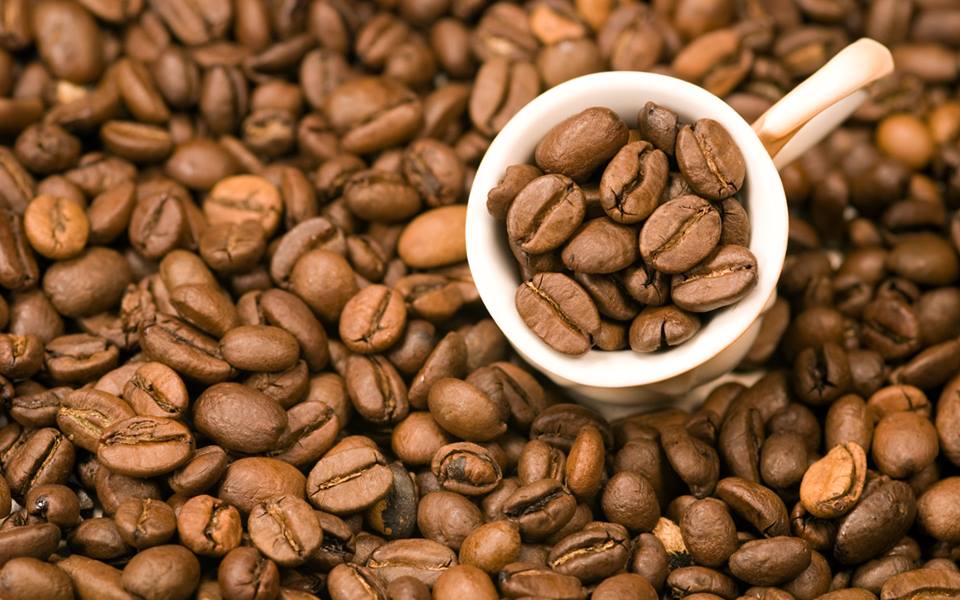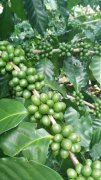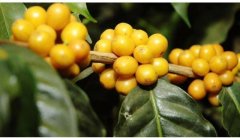Coffee beans are mostly named as the country of production or origin or port of shipment, the origin of Brazilian Santos coffee beans.

For professional baristas, please follow the coffee workshop (Wechat official account cafe_style)
Coffee beans are named after the country of production or place of origin or port of shipment
It is also marked by subdividing the size or quality of beans, the elevation of the cultivated land and other characteristics.
But
Even coffee of the same name has its taste and aroma.
It will still be due to the harvest year, climate, harvest and other factors.
Or in the refining process is different and different.
In addition, the key degree of baking varies greatly according to the personality of different tastes.
List the characteristics of more familiar brand coffee beans on the basis of new beans (fresh beans)
Brazil Brazil (Santos)
The famous Brazilian Santos refers to the beans shipped from the port of Santos.
The sour taste and bitter taste are so mixed that they become the most commonly used base for mixed beans.
The taste of medium frying is soft and plain.
Deep frying bitterness is stronger.
Brazil, the largest coffee producer in the world
Brazil is the largest coffee producer in the world, so of course we should know more about it. The annual output of Brazilian coffee beans exceeds 30 million bags (60 kg each). Coffee experts do not think highly of their beans, saying that they are too monotonous, bitter, sour and fragrant enough, and are not even included in the list of producing areas of fine coffee. Because most of the Brazilian coffee gardens are below 1200 meters above sea level, there are no shade trees, and the way of picking beans is rough, and the raw and ripe fruits are picked together, which does not meet the conditions of fine coffee. Planting trees with exposure planting method makes the coffee fruit grow faster, so that the flavor development is not complete, and the hardness of beans is insufficient, the acidity of fruit is obviously low, and there is a smell of wood, which can not be elegant. The quality of Brazilian beans is soft, it is obviously not resistant to heat in the baking process, and the baking time should be earlier, otherwise it is easy to be scorched. But Italians have a special preference for soft beans, thinking that Brazilian soft beans are the most suitable for espresso. Their espresso consists of 90% Brazilian beans and 10% robusta beans, which is a match made in heaven. For more than 20 years, Brazil has tried to expand its market share and increase production, but its quality has been affected. The average price of Brazilian beans per pound is 20% lower than that of Colombia, but it is still profitable. In 1998, Vietnam beans were dumped at low prices, and the Brazilian government, under pressure, decided to improve the quality and enter the high-end markets in Europe and the United States, so as to increase farmers' income by increasing the price. In addition, the Brazilian Coffee Association, which was established in 1991, was convinced that there were many beautiful farms in the country, and the coffee quality was comparable to that of very hard beans at high altitude. So, with the assistance of the American Coffee Association, the first Brazilian Coffee Competition Cup of Excellence was held in 1999. The winners can bid openly by international buyers through internet. The results are ideal and can encourage coffee farmers to improve the quality of their coffee beans. In 2000, the Brazilian Coffee Association expanded to hold the second Cup of Excellence. 477 farms participated in the competition, which was reported all over the world. The top 40 were selected by Brazilian cup testers and then handed over to 24 international coffee experts from 12 countries, including the United States, Japan, Germany and Norway. The Brazilian Coffee Association intends to make use of this event to wash the name of Brazilian beans under the witness of international top cup testers! 24 cup testers spent 3 days to evaluate and hold a discussion, and finally selected 18 farms that best represent Brazilian flavor, which are well received compared with prospective bidders. The Brazilian Coffee Association took advantage of the victory to re-move the "Strictly Soft" coffee, which is the flavor standard set by the Brazilian authorities for authentic Brazilian beans 80 years ago, "the entrance is sweet, pure, and does not bite the throat". Over the past 20 years, coffee has replaced manual picking of beans by mechanization, destroying the flavor of brown beans. Only by picking red ripe fruit and careful bean handling can the tone of "entrance is sweet" be highlighted. Under the guidance of the Brazilian Coffee Association in recent years, farmers have improved significantly! Brazilian coffee producing areas are mainly distributed in three states: Bahia, Minas Gerais and Sao Paulo, in which Minas Gerai production accounts for half of Brazil and plays an important role. Soberg & Hansen, a well-known Norwegian bean baker and raw bean importer, has paid a high price for raw beans from Fazenda Rainha Farm, which is widely discussed in the global coffee industry because Brazilian beans have never had such a high price, which is a big encouragement to the Brazilian coffee industry. The Brazilian government not only improves the image of coffee beans, but also brings unexpected wealth to carefully managed farms, which can be described as both fame and wealth!
Note: Black Frost, a natural coffee tree bacterium that Brazilians still remember, poisoned millions of coffee trees in Brazil in 1975, almost wiping out all coffee trees and causing a sharp rise in global coffee prices.
Important Notice :
前街咖啡 FrontStreet Coffee has moved to new addredd:
FrontStreet Coffee Address: 315,Donghua East Road,GuangZhou
Tel:020 38364473
- Prev

Introduction to the Flavor of Indonesian Mamassa Coffee what is the effect of low water temperature on the flavor of Japanese brewing methods
Professional barista communication Please follow the coffee workshop (official Wechat account cafe_style) when it comes to Sulawesi Coffee, Toraya Coffee may have a strong impression. But this time we will introduce coffee in Mamasa County, west of Tanatolaya. Sulawesi Massa is this kind of coffee. This baking: medium and deep baking treatment: wet planing fragrance (the smell of raw beans)
- Next

The aroma of single Brazilian coffee blends with the highest grade Santos NO2 of Brazilian Santos coffee
Professional baristas please pay attention to the coffee workshop (Wechat official account cafe_style) Brazil accounts for 30% of the global coffee production, coffee is mainly produced in the southeast, mostly exported through the port of santos, hence the name Brazilian Santos coffee beans. The aroma of Brazilian coffee is very harmonious, neutral and delicate, with aromas of dried jujube, cinnamon and nutmeg.
Related
- Detailed explanation of Jadeite planting Land in Panamanian Jadeite Manor introduction to the grading system of Jadeite competitive bidding, Red bid, Green bid and Rose Summer
- Story of Coffee planting in Brenka region of Costa Rica Stonehenge Manor anaerobic heavy honey treatment of flavor mouth
- What's on the barrel of Blue Mountain Coffee beans?
- Can American coffee also pull flowers? How to use hot American style to pull out a good-looking pattern?
- Can you make a cold extract with coffee beans? What is the right proportion for cold-extracted coffee formula?
- Indonesian PWN Gold Mandrine Coffee Origin Features Flavor How to Chong? Mandolin coffee is American.
- A brief introduction to the flavor characteristics of Brazilian yellow bourbon coffee beans
- What is the effect of different water quality on the flavor of cold-extracted coffee? What kind of water is best for brewing coffee?
- Why do you think of Rose Summer whenever you mention Panamanian coffee?
- Introduction to the characteristics of authentic blue mountain coffee bean producing areas? What is the CIB Coffee Authority in Jamaica?

